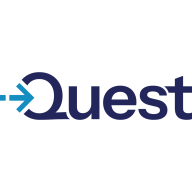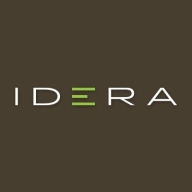

ER/Studio and erwin Evolve compete in data modeling and process management. ER/Studio appears to have an upper hand in data modeling with advanced capabilities, while erwin Evolve leads in process modeling and visualization.
Features: ER/Studio offers advanced data modeling, robust reverse engineering, and graphical support for large models. It facilitates automation and seamless integration. erwin Evolve provides comprehensive process modeling and visualization, extensive integration with systems, and enterprise architecture management with impact analysis.
Room for Improvement: ER/Studio experiences challenges with deployment complexities, outdated visuals, and slow performance with large models. erwin Evolve could improve integration conveniences, navigation, and web interface usability, and enhance data model synchronization.
Ease of Deployment and Customer Service: ER/Studio primarily deploys on-premises, with efforts for improved technical support despite response time concerns. erwin Evolve offers both cloud and on-premises deployment options. Users express satisfaction with its support, albeit noting slower response times.
Pricing and ROI: ER/Studio is considered expensive with complex licensing, but users value productivity benefits. erwin Evolve also comes with high costs but is seen as favorable due to flexible licensing and strategic organizational advantages for larger teams.
| Product | Market Share (%) |
|---|---|
| IDERA ER/Studio | 3.7% |
| erwin Evolve | 2.8% |
| Other | 93.5% |


| Company Size | Count |
|---|---|
| Small Business | 7 |
| Midsize Enterprise | 2 |
| Large Enterprise | 12 |
| Company Size | Count |
|---|---|
| Small Business | 4 |
| Midsize Enterprise | 11 |
| Large Enterprise | 25 |
erwin Evolve provides comprehensive graphical support for handling large data models. It offers features such as metadata access, version control, and model comparison, enhancing operational reports and system analytics through its collaborative web-driven design.
erwin Evolve facilitates reverse engineering and database integration, fostering collaboration and process exploration through its web interface. Customizable and easy to configure, it supports workflow configuration and architectural modeling. Users can utilize its capabilities for developing industry models, managing transformation programs, and presenting standard operating procedures. Despite its strengths, there are demands for improved integration, enhanced UML support, and a more modern user experience. Users also express challenges with legacy system updates and call for better connectors and collaborative features.
What are the key features of erwin Evolve?Data-driven organizations in sectors like finance and healthcare implement erwin Evolve for data warehousing, enterprise architecture, and business process modeling. They leverage its capabilities for cataloging architectural elements, linking to CMDBs, analyzing system interfaces, and describing business processes. Utilization extends to IT solution registration, business capability planning, and strategic modeling, with frequent deployments on cloud platforms to support transformation initiatives.
IDERA ER/Studio is a powerful suite for business-driven data modeling that enables companies to create an enterprise architecture foundation for data governance. With round-trip support for multiple database platforms, data architects have the power to reverse-engineer, analyze, and optimize existing databases easily from diverse platforms. Data professionals can easily capture and share models, metadata, data sources, and glossaries across the organization for improved alignment between the organization and Information Technology. Organizational stakeholders can take part in the metadata definition workflow and access information on models and metadata at the right level for their needs.
Unlike its competition, it provides the broadest range of data platform support, industry-leading enterprise-level capabilities, visual data lineage and flow modeling, full dimensional modeling for data warehousing and business intelligence, and business data objects to bridge the gap between developers and data architects. It also provides a complete solution for enterprise architecture and data governance, extensive model change management, unique incorporation of true enterprise data dictionaries, unique linking of constructs across models, integrated visual data lineage import, and integrated data and business process modeling.
We monitor all Enterprise Architecture Management reviews to prevent fraudulent reviews and keep review quality high. We do not post reviews by company employees or direct competitors. We validate each review for authenticity via cross-reference with LinkedIn, and personal follow-up with the reviewer when necessary.